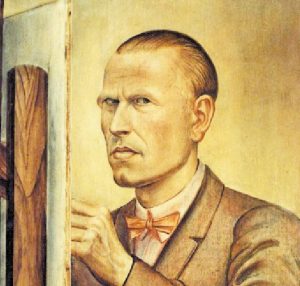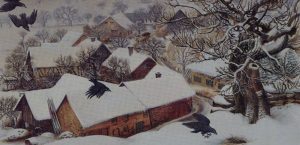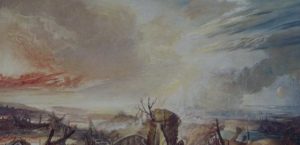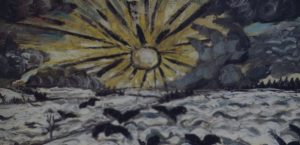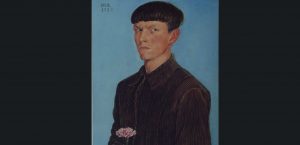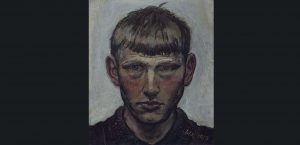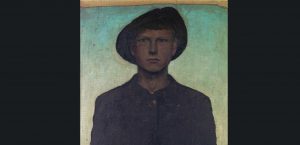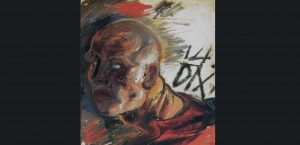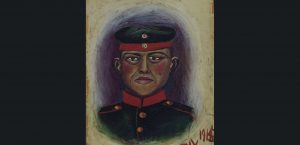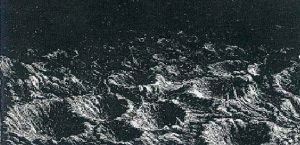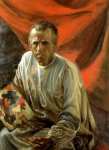Otto Dix was born on the 2nd of December in 1891 in Hera, Thuringia, The German Empire.
1891 - 1869
Otto Dix
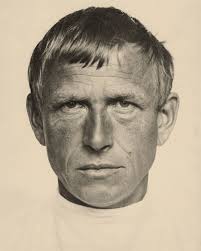
description
A German artist, graphic artist, an author of emotionally intense, expressionistic and shocking paintings.
He was born into the family of worker Franz Dix and sewer Polina. His mother instilled in his son a love for music and poetry.
One of the founders of Dada movement was the most influential creator who formed the image of the Weimar Republic of the 1920s; his works are key in the movement “Neue Sachlichkeit” (“New objectivity” or “New Materiality”). He is one of the founders and participants in the union “Dresden Secession” (1919). In the canvases of Otto Dix, pacifist, social, and in later works biblical motives are vivid. The artist was a participant in two world wars.
Key ideas:
– The words of Otto Dix, “Art is an exercise, I draw dreams and views of my time. Art is an attempt to create peace in oneself. I have as much chaos in me as it is in our time”, may serve as a key to understanding the key ideas of Dada artist and Expressionist. Only a few creators were as tightly connected with tragic events and political catastrophes of Europe as Otto Dix.
– The young artist and veteran of the First World War was persecuted by his experience of the participation in the horrible tragedy. Otto Dix depicted “the war with an honest face” as its eyewitness. The other theme of the works of Dix was a satire He is considered one of the sharpest caricature painters in the modern painting.
– While many artists refused from the portrait genre in favour of abstraction, Dix made it resurrect, creating the portraits of famous activists and celebrities from the intellectual circles of Germany. His narrative paintings are remembered by the accusation of corrupt and immoral life of the modern city. At the height of his art career, he painted in the genre of nu, depicted prostitutes.
– Typical for portraits by Dix of the beginning of the 1920s is a portrait of Fritz Glazer. The artist often invited his famous friends as his models – art-dealers, writers, doctors, lawyers who were interested in art. For example, Glazer had an impressing collection – Wassily Kandinsky, Paul Klee, Emil Nolde and others. Caricaturist Dix highlighted the expressive features of the lawyer’s face, in this case, an expressive Semitic nose. These and other portraits, especially those of journalist Silvia von Harden, impress with the contradiction between good, often friendly relationships between models and their unattractive images in paintings.
– The works of the artist become more gloomy and allegoric at the beginning of the 1930s, when he became an indicative target for Nazis. The regime called him a degenerative artist; many of his works were burnt. Dix had to leave the grotesque style that he used to sharply criticize corruption and other negative phenomena in the Weimar community. Slowly departing from social themes, Dix turned to landscape and story paintings on Christian themes. Only in the years following after the Second World War, the master received as much recognition as he deserved.
1891
1900
1909
1913 - 1918
1919 - 1922
1922 - 1923
1925 - 1930
1930 - 1940
1939
1950
1969
The birth of the artist
At the age of 10, he was a model of artist F. Amann
At the age of 10, he was a model of artist F. Amann; impressed by the studio and his role, he decided to become a painter. His painting teacher, E. Shunke, supporting the teenager, helped him receive the financial help that demanded that Otto learn the craft. After 4 years, he became a master and decorator.
Entered the Dresden Academy of fine art
Entered the Dresden Academy of fine art, famous as a good creative school. As a talented student, he was freed from paying for studies and received a stipend. To get additional money, he sold small portraits and genre paintings, decorated photos. In the workshop of sculptor R. Gura, he created a bust of F. Nietzsche that was bought by the Dresden museum (later it was destroyed by Nazis). Intensively studied the works of Dutch, Italian and German masters.
He got impressed by the paintings of Post-impressionists
Having visited an exhibition, he got impressed by the paintings of Post-impressionists, including Van Gogh and Expressionists. When the First World War began, he voluntarily joined the army, became a machine gunner at the leading front in France; was wounded several times; having received an experience of the horror of fights, he managed to create sketches of many tragic scenes of the war.
Became a co-founder of the Dresden Secession
Resumed his painting studies with Max Feldbauer and Otto Hussmann at the Dresden Academy of Arts; became a co-founder of the Dresden Secession, participated in two exhibitions at Galerie Emil Richter.
Moved to Dusseldorf
Moved to Dusseldorf, was a student of G. Nauen and V. Herbeholz, became a part of the art salon J. Ey and German Art Nouveau group “Das Junge Rheinland”. Married Marta Koch; they got three children whom the artist depicted during their whole childhood.
1925 – The works of Dix were included in the exhibition of the group “Neue Sachlichkeit», created the canvas “Metropolis” and worked on the triptych “War” (finished in 1932).
“Neue Sachlichkeit»
The works of Dix were included in the exhibition of the group “Neue Sachlichkeit», created the canvas “Metropolis” and worked on the triptych “War” (finished in 1932).
Was appointed a member of the Prussian Academy of Arts in Berlin
Was appointed a member of the Prussian Academy of Arts in Berlin; his works were presented everywhere in Germany and at the Museum of modern art in New York. Soon the Nazis declared his art immoral and forbade him to exhibit his works in Germany; a few times went to Switzerland to participate in exhibitions.
Was accused of a conspiracy to kill Hitler
Was accused of a conspiracy to kill Hitler, though was justified. Captured by the French, he was held captive until 1946. Created a triptych for the camp chapel.
Traveled a lot
Traveled a lot, constantly exhibited his works, was appointed a member of academies in Florence, Berlin and Dresden; participated in a documentary (1965).
The death
He died on the 25th of July in 1969 in Singe near Baden, the Federal Republic of Germany.

